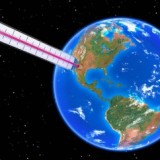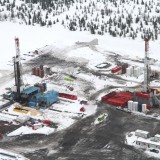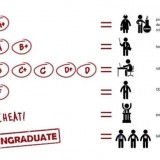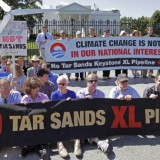The subject of global climate change is critically important, irresistibly fascinating and incredibly complex. The following are relevant slices of information on this amazing subject.
1. According to the science journal, Nature, predictions of global temperature increases made by leading climatologists in 1990 have proven to be incredibly accurate. They estimated that from 1990 to 2030, the global temperature increase caused by greenhouse gas emissions would be 1.1°C — it was 0.39°C at the halfway point in 2010. The second 20-year period allows for slightly higher rate of increase because of the delayed response of ecosystems to existing carbon dioxide emissions and the effect of continuously higher emissions throughout most or all of the 20-year period. This would bring the global temperature increase well above the 2.0°C considered safe.
2. Human emissions of carbon dioxide into Earth’s atmosphere in 2011 were 34.7 billion tonnes, up about 1 billion tonnes from the previous year. If billions are too big to comprehend, these total emissions translate into 1,100 tonnes per second — about the weight of 500 cars dissolving into the atmosphere 60 times every minute (Globe and Mail, Dec. 4/12).
3. In addition to supplying a valuable nursery for many of the ocean’s small animals and fish, scientists have discovered that for thousands of years seagrass ecosystems have been locking an estimated 27.4 million tonnes of CO2 annually into marine soils — as much per hectare as forests. But dredging, pollution and siltation are destroying these seagrass ecologies at a rate of 1.4 percent per year, releasing about 299 million tonnes of CO2 into the atmosphere annually. Scientists worry that expanding dead zones, global warming and ocean acidification caused from burning fossil fuels may ultimately kill these special ecologies. Dying seagrass ecologies would eventually release the 19.9 billion tonnes of carbon dioxide presently stored in them (NewScientist, May 26/12).
4. Australia’s summer of 2012 has been exceptionally hot and dry. Temperature records kept since 1883 have been shattered. New South Wales and Tasmania are suffering from extensive wild fires. After labelling the increasingly threatening conditions as “serious”, “dangerous” and “critical”, scorching temperatures of 45°C with winds of 100 km/hr have prompted fire officials to add “catastrophic” to their ascending order of warnings. A code “purple” has been added to the warning system for temperatures above 50°C.
5. In April, 2012, for the first time in human existence, the mean concentration of measured atmospheric carbon dioxide throughout the Arctic and in Japan reached 400 parts per million. The levels usually peak about April before plants begin to absorb carbon dioxide during their annual growth cycle. The year-long average for 2012 will likely drop to about 393 ppm, up considerably from the 280 ppm that preceded industrialization. Pieter Tans of the US National Oceanic and Atmospheric Administration’s Earth System Research Laboratory concedes he doesn’t know the level that can be deemed safe. But he says that by continually raising this concentration, “We’re playing a very dangerous game” (NewScientist, June 9/12).
6. Some of the huge quantities of carbon dioxide emitted into the atmosphere from burning fossil fuels eventually dissolve into the oceans to form carbonic acid. As oceans become more acidic, small animals in the crucially important marine food chain are unable to form their calcium carbonate shells. Oregon and Washington oyster growers discovered this in the mid-2000s when their “larvae” were unable to develop into the “seed” needed re-populate their oyster beds. Upwelling ocean currents carrying 50 year-old concentrations of carbon dioxide were mixing with CO2-rich surface water to create pH levels too acidic for the larvae to survive. The oyster growers have temporarily solved the problem by importing larvae from elsewhere.
7. During a tweet connection from the International Space Station to a school in Bedford, Nova Scotia, a student asked the new commander of the ISS, Canadian Chris Hadfield, if any signs of global warming were visible from space. Hadfield quickly replied that evaporated lakes, shrinking glaciers and desertification were all clearly evident (CBC Radio, Jan. 5/13).
8. In CBC Radio’s popular science program, Quirks and Quarks, listeners were invited to predict the future, and then experts were asked to respond (Jan. 5/13). One prediction was that by 2075, 50 percent of Canada’s boreal forests would be burned by forest fires. The expert disagreed — he said the amount would probably be in excess of 55 percent. In the 1970s, he said, the loss to fires was about 1 million hectares per year (m/ha/yr). Today it is about 2 m/ha/yr. By 2075 it will be at least 4 m/ha/yr. A rise of 3-4°C in boreal temperatures by 2075 will mean that forest fires will become larger and more common, making human habitation more risky — the 2011 forest fire that raged through the Alberta town of Slave Lake destroyed half its buildings and caused $750 million in damage. A precipitation increase of 40 percent would be needed to compensate for the warmer conditions. Many burned areas will naturally re-seed but, if fire cycles are more frequent than every 20 years, boreal forests will revert to grassland rather than regenerate.
9. Arctic ice melt reached record levels in September, 2012.
10. The US National Oceanic and Atmospheric Administration announced in October, 2012, that the previous month had been the warmest September on record, tying the 2005 title (Globe and Mail, Oct. 17/12). Using temperature records that stretch all the way back to 1880, September, 2012, “marked the 331st straight month with above average temperatures, and the 36th straight September with global temperatures above the 20th century average.” This means that “the last below-average month for any month of the year occurred in February 1985”, and that everyone who is 27 years-old or younger has never lived in a cooler than average month.







